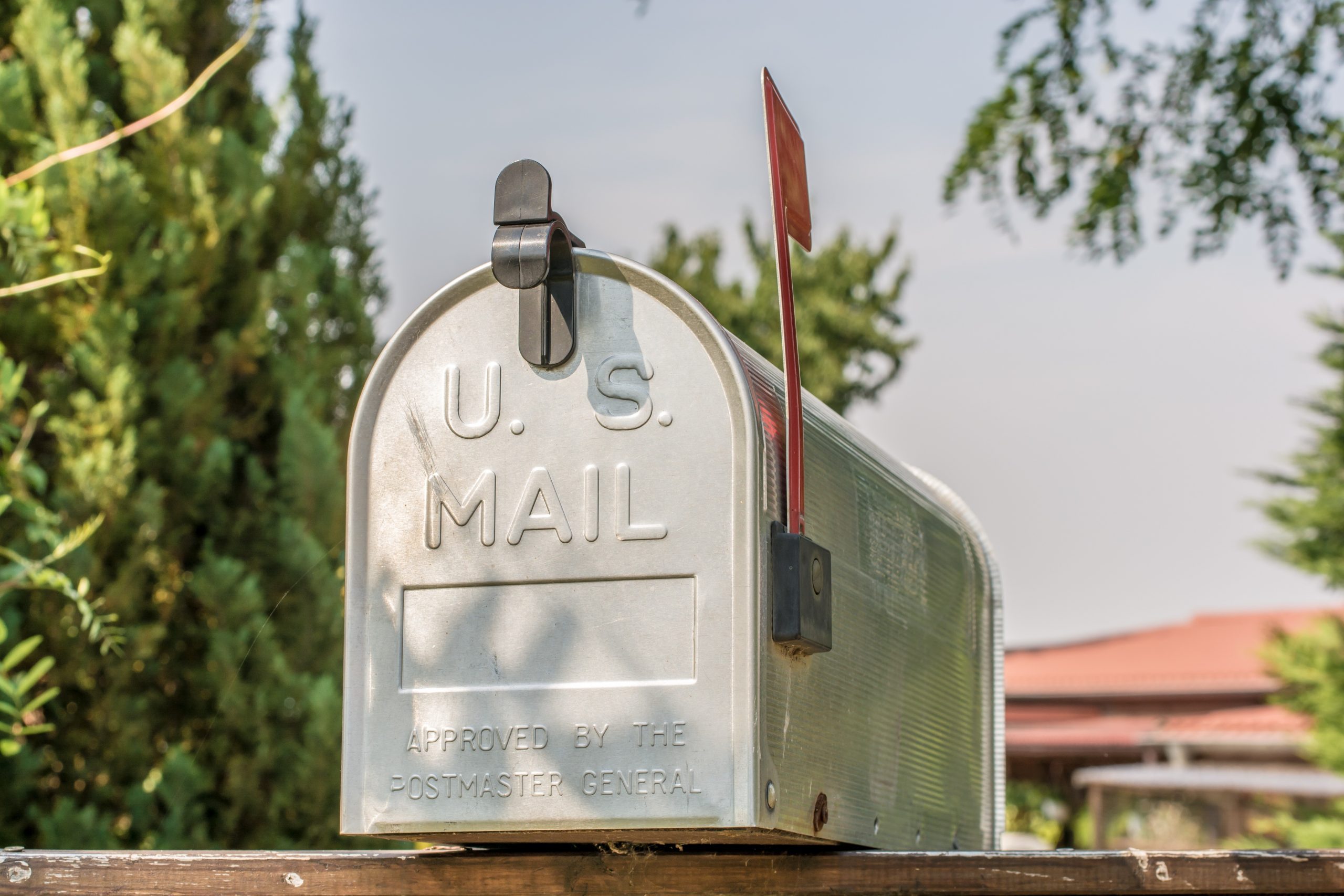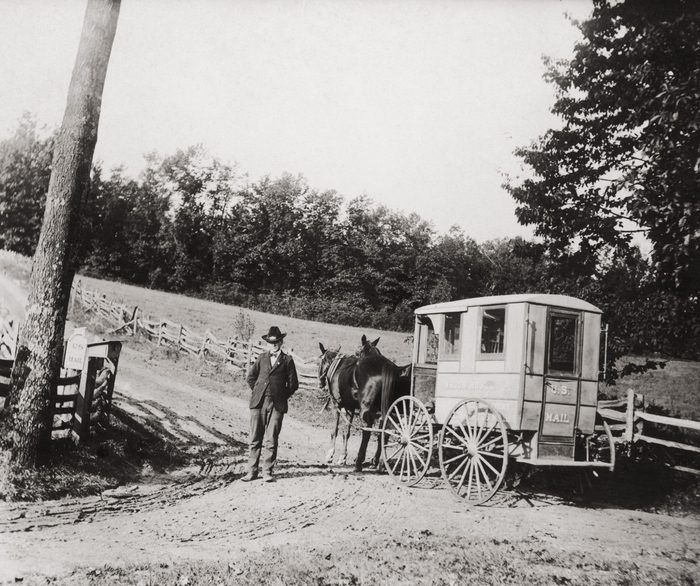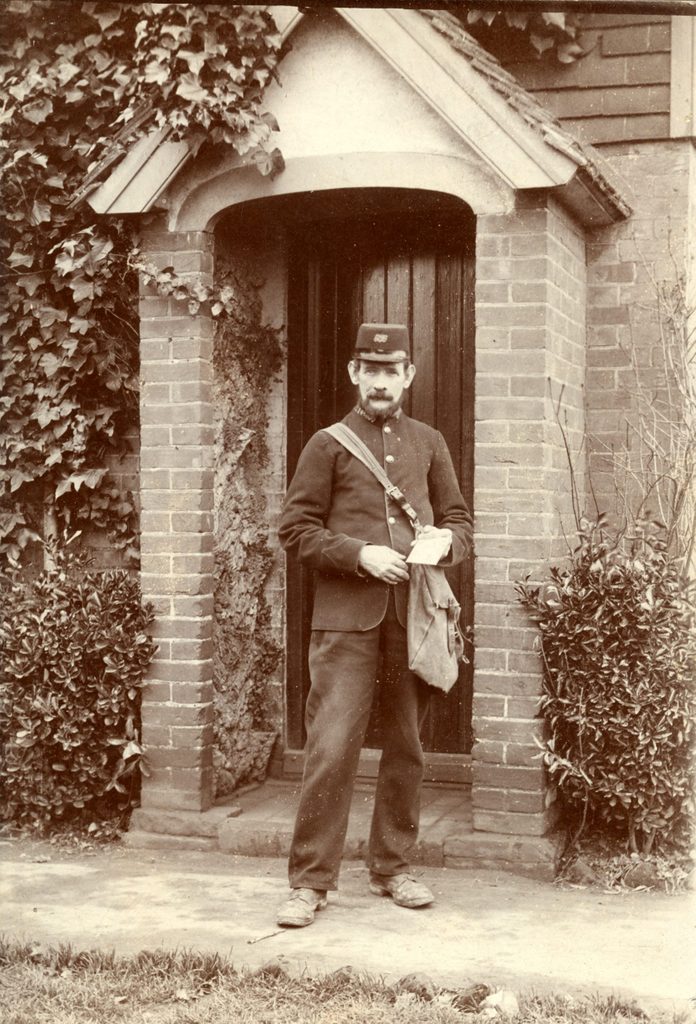Please don't mind us if we get "carried" away by these photos of what mail delivery looked like 100 years ago

What Mail Delivery Looked Like 100 Years Ago


Sometimes they delivered on scooters
If you think postal delivery people riding around on scooters is a new thing, we’re here to surprise you: Mail delivery 100 years ago included delivery by scooter! Check out these postmen, poised astride two-wheelers and ready for duty, circa 1910.

Fe-mail carriers
Did you know that women have been working as mail carriers since the turn of the 20th century? Women were initially employed only to service rural routes. However, by 1917, female mail carriers had begun taking city routes. That’s the year this photo—of a female postal worker delivering mail to a young girl—was taken. Today, more than one-third of all letter carriers are women.

The birth of airmail
The first official airmail was delivered on May 15, 1918. The man in this photo, Lieutenant James Clark Edgerton, was the youngest of the six pilots who flew the mail that day. He got the job because of nepotism, according to the Smithsonian Postal Museum: His father worked for the U.S. Post Office Department, which was a predecessor of the U.S. Postal Service. He’s pictured with his younger sister, Elizabeth, following his arrival in Washington, D.C., where he received a gift of flowers on his arrival.

A creative use for airmail
Not even a year after the dawn of airmail delivery, this photo was taken of a woman arriving via airmail in San Diego. The postal worker who met the plane is hand-canceling the postage that paid for her as cargo, so that it can’t be used more than once. Good thing this precious package wasn’t lost! Nowadays, there are laws prohibiting the mailing of live humans.

“Human mail” had actually begun several years earlier
The practice of using the mail to deliver humans from one place to another had actually begun in 1913, coinciding with the advent of the U.S. Postal Service’s Parcel Post service. Immediately after Parcel Post went into effect, an Ohio couple used the service to mail their infant son from their house to his grandmother’s house a mile down the road. Thankfully, the practice was banned just a few years later, in 1920.

“Sorting” through gender roles
Most, if not all, of the postal workers seen here sorting mail in 1920 are female. And most, if not all, had begun their careers as postal workers during World War I—an important contribution to the changing roles of women more than a century ago.

Mail by horse-power
A not-so-surprising fact about early mail delivery? Horse-drawn wagons were originally used to transport mail in large cities, according to the U.S. Postal Service. Automobiles were first tested for mail delivery in 1899 and first put to official use in 1906. By 1911, “motor wagons” were being used for mail delivery in only seven cities.
This photo, taken around 1920, shows a horse-drawn mail carriage about to climb a steep hill. But as cars became more accessible, horse-drawn mail carriages began to disappear, and by 1933, only 2% of postal vehicles in cities were powered by horse.

The uniform goes back a long way
“City letter carriers were first required to wear a uniform in 1868,” states the USPS. Initially, the uniform was blue-gray with black trim and bore a resemblance to military garb. But mail carriers know something about weather, and safety, so their uniforms have evolved over time to provide greater comfort, especially in the heat of summer. Try telling that to the postman pictured here in 1920, wearing a heavy, buttoned-up woolen uniform topped with a hat.

Mail can make a child’s day
In this 1926 photo, children at a London hospital wait anxiously as a woman dressed as a “postman” announces mail call on the ward. Nowadays, much of our “snail mail” is junk mail, but back then, who knew what surprise would arrive?

Mail makes everyone happy
It’s not just children who light up at the sight of an old-fashioned letter. In this photo (which shows mail delivery 100 years ago, in 1925) a woman looks positively delighted as she receives a pile of mail from a postman. While there’s a good chance this photo was staged to boost the Postal Service’s profile, it’s safe to say everyone understands the power of receiving something personal via post.

The Postmaster poses as a postal delivery man
In 1925, Postmaster Arthur C. Leuder donned the mail carrier uniform and even borrowed a mail pouch to kick off that year’s Christmas Seals campaign, which raised funds to fight tuberculosis. Christmas Seals had first been issued in 1907 to raise money to fight the disease.
Why trust us
At Reader’s Digest, we’re committed to producing high-quality content by writers with expertise and experience in their field in consultation with relevant, qualified experts. We rely on reputable primary sources, including government and professional organizations and academic institutions as well as our writers’ personal experiences where appropriate. We verify all facts and data, back them with credible sourcing and revisit them over time to ensure they remain accurate and up to date. Read more about our team, our contributors and our editorial policies
Sources:
- History.com: “U.S. postal system established”
- USPS.com: “Women Mail Carriers”
- Bloomberg.com: “Why Are We Still Calling Postal Workers ‘Mailmen’?”
- Postalmuseum.si.edu: “Stamp and Flight Families: Part 1”
- History.com: “When People Used the Postal Service to Mail Their Children”
- Smithsonianmag.com: “A Brief History of Children Sent Through the Mail”
- BBC: “The changing role of American women in the 1920s”
- American Lung Association: “The History of Christmas Seals”















